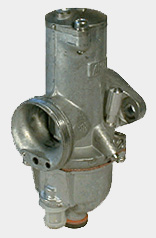|
|
 |
Want better performance from your older Triumph, BSA, Norton, Royal Enfield, AJS, Velocette, Ariel or Matchless single, twin or triple? Already have Amal Concentric carburetors, but don’t know how to adjust them? Doesn’t run “right”, and won’t respond to the changes you’ve made? Can’t get the information you need from the original instructions (even the very useful Coventry Spares, Ltd.’s “Tuning Your Carburetor: Amal - The Basics”)?
Perhaps you're preparing a vintage racer for AHRMA, etc. and are required to use the Concentric by class rules. Want to give your bike a competitive advantage? Try out that new megaphone? This will help.
Amal Concentric Mark I carburetors have been used successfully on British motorcycles since 1966. I’ve learned how to adjust them on older British twins (beginning with my own 1970 Triumph Bonneville), including the Triumph Daytona, T120, TR6, 6T, BSA Lightning Rocket, Thunderbolt, Norton Commando, Velocette and more 350, 500, 650, 750 and 828cc singles, twins & triples. These carburetors are attractive and “period” in appearance, easy to find and tune, small & compact. All sizes of these types have very similar component functions. The commentary in my booklet is limited to Amal Concentric Mark I carburetors: Type 900 (928, 930, 932) & Type 600 (622, 624, 626, 627). |
|
|
|
Which is which? The Concentric Mark I is original equipment for some British models beginning in 1967, and almost universal from 1968 into the middle 1970’s, when it was superceded by the Concentric Mark II. This booklet does not cover Concentric Mark II tuning, although the general theory applies and component function is very similar. The older “Monobloc” was original equipment for most British models from 1955-1967 (except for some high-performance specials such as BSA Gold Star and Spitfire). I offer a separate booklet for the Monobloc:  . .
My booklet includes specific choices of carburetor size and starting points for jetting many British engines, giving you something you can really use, along with many helpful hints, comments, observations, data, etc. including how to adjust for open exhaust, big cams, etc. I can’t include instructions for your motor - there are too many variables - but the bike will definitely start, idle, run acceptably with
good throttle response, and allow you to make those final adjustments to
get it running really sweet.
This is not the “generic” instructions or re-print of 40 years old Amal factory material you've already seen on-line (click for more information here:  ) but begins where they leave off, and goes beyond into fine tuning. Some of this information has been previously available from other sources, but is comprehensive and co-ordinated here to be more helpful and instructive. Explains and compares differences in components and function between the Monobloc & Concentric carburetors, which parts can be interchanged and why. Not an expert mechanic? You’ll still find this useful to identify what adjustments and parts you need. All parts are easily available all over the world at reasonable prices. If you’re using an Amal carburetor, you should read my booklet. ) but begins where they leave off, and goes beyond into fine tuning. Some of this information has been previously available from other sources, but is comprehensive and co-ordinated here to be more helpful and instructive. Explains and compares differences in components and function between the Monobloc & Concentric carburetors, which parts can be interchanged and why. Not an expert mechanic? You’ll still find this useful to identify what adjustments and parts you need. All parts are easily available all over the world at reasonable prices. If you’re using an Amal carburetor, you should read my booklet.
I guarantee that you’ll find information in my booklet you’ve never seen before, and which will help you plan and complete your carburetor installation and adjustments.
Consider this: if my booklet saves you from making even a single mistake or bad purchase, or gives you one new idea, doesn’t that make this purchase worth while? The price is a small fraction of what you have invested in the carburetors, let alone the classic motorcycle itself - plan more intelligently, and get better results.
“Super-Tuning Amal Concentric” is the enlarged version of my earlier “Amal Concentric Tuning”, stapled in paperback for reduced printing costs, and includes all the following subjects in 57 pages (over 41,000 words), with over 30 black & white illustrations & diagrams, plus 37 data tables: |
How the Amal Concentric works; an in-depth examination of how the different circuits operate, exactly what each component does, how to interchange parts and make adjustments, explained in much more detail than the factory service bulletins.
Tuning components; which internal parts can be adjusted or substituted to change mixture.
Needles sorted by Type & marking; which needles are used in which carburetor and why.
How to test and adjust mixture using a vacuum gauge.
Adjusting mixture for alternate exhaust systems; including TT pipes and megaphones.
Adjusting mixture for hot cams.
Diagnosing and correcting mixture based on symptoms.
Setting up a new carburetor from scratch.
Dynamometer testing; how to prepare, tools, supplies.
Alternate slide and needle jet sizes; more choices than factory parts to set mixture more closely.
Adapting non-Amal Parts; which Mikuni slide, needle, jets &c. may be useful.
Advanced speed tuning; any Amal carburetor can be fine-tuned for more air-flow, more accurate jetting and better performance with these modifications and adjustments.
Carburetor selection; explores possible alternate choices, depending on your motor type, size, intake manifold, cam timing, etc.
Tuned length intake manifolds; how to make calculations for more power, including 5 Tables of pre-set manifold lengths based on cam duration, RPM, etc.
Dual intake manifold fabrication; how to convert your single-carburetor twin (TR6, &c.) to dual carburetors, size selection, what parts are needed for your current carburetor, how to make your own individual manifolds from common materials.
Velocity stacks and ram tubes; how they work, which ones are best.
Tunnel-ram intake manifold; more power for single-carburetor racers with theory, calculations and dimensions,
including illustrations and 2 Tables of pre-set data.
Tuned “Helmholtz” resonator; add an air box for power, discusses theory, calculation and dimensions, including 5 Tables of pre-set data.
Jetting tables; specific trial jetting suggestions for motors based on displacement, carburetor size and type; over 31 entries for single carburetor, 11 entries for dual carburetors. Many dimensions are given in decimal & fractional inches and millimeters for convenience.
Converting the Concentric to alcohol; discusses jetting changes for methanol, ethanol, advantages, maintenance, safety. Most dimensions are given in fractional inches, decimal inches and metric for the convenience of tuners in all languages. |
Please note: this is not a coffee table book, it is intended to be a research tool for those who seriously want to improve their Amal Concentric carburetors. This is not a repair manual. If your bike won’t start, float bowl leaks, spark plugs foul, &c. my booklet will not help you. It does not contain information on tune-ups, or explain how to remove, disassemble or clean the carburetor. It does not identify the “build number” for your specific engine, or list the original components used in a specific carburetor. If you do not already have this information do not buy this booklet. If your engine is stock and you’re pleased with how it runs now, this booklet is not going to be of much use, although you might find it interesting. |
New: get this booklet plus “Super-Tuning Amal Monobloc carburetors”at reduced price, click here for details:  . .
I’m the author, Jeffrey Diamond. I’ll sign the title page of the book for you, just tell me what to say. When I’m dead it may be worth money!
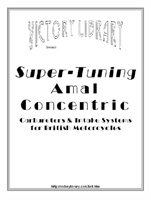 |
 |
Price: $19.95 + the actual postage. No hidden charges. I'll ship anywhere in a strong tear-proof Tyvek envelope by 1st Class Mail. Click here to order by mail:
 U.S. 1st Class Mail U.S. 1st Class Mail
 All foreign orders 1st Class Mail Int’l. All foreign orders 1st Class Mail Int’l.
My address is below. Sorry, I can’t take your credit card directly but PayPal can, see below.
|
Use your Visa or Mastercard to pay with PayPal |
New York State
(with sales tax)
1st Class Mail |
|
|
|
|
U.S., other States
(including APO, FPO)
1st Class Mail |
|
|
|
|
Canada
1st Class Mail International |
|
|
|
|
Europe, Australia, Japan,
most
other foreign countries
1st Class Mail International |
|
|
|
|
New Zealand, South Asia,
Africa, South America
1st Class Mail International |
|
|
|
|
See these Victory Library booklets |
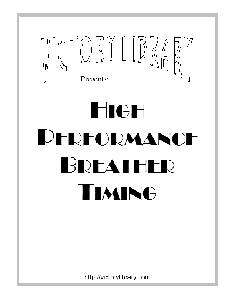
|
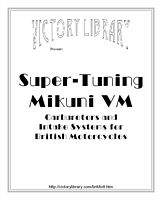
|
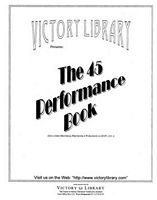
|
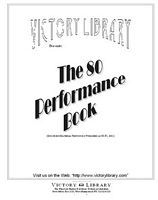
|
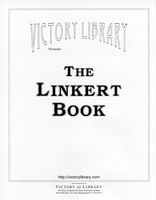
|

|

|
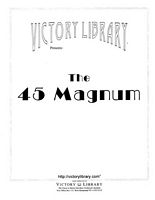
|
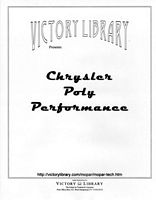
|
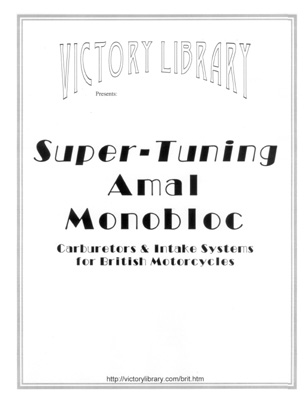
|
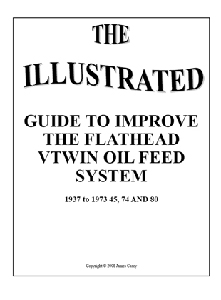
|
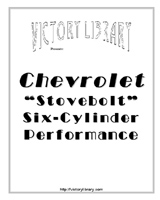
|
My booklet is absolutely not the same as (or even similar to) the "tuning guides" you may have seen described as "Complete tuning and troubleshooting guide", the most common one is "Hints and Tips For Amal Carburetter, Series 600 and 900, List No. 117/3". This is, in fact, xeroxes of the original Amal factory literature, but (despite the claims made) contain absolutely no specific information about individual engines. Click to see what people who bought these products said about them (actual eBay feedback):  . . |
350, 441, 500, 622, 624, 626, 627, 88, 932, 99, A75, AJS, Atlas, B35, B44, B50, carby, Commando, Cyclone, Daytona, Dominator, Gold Star, GS, Goldie, GP, Hornet, Lightning, Manxman, Mark I, Mark1, Mark2, Mark 2, Mark II, Matchless, Norton, R3, Rocket, Golden Flash, Royal Enfield, Super, T100, T100A, T100R, T150, T160, Thunderbolt, Tiger, Trophy, Victor, X75
Actual eBay feedback comments left about those OTHER xeroxed “tuning manuals”:
“very hard to read poor copy”
“Not many pages, 5 xeroxed pages?”
“WAS EXPECTING MORE THAN 6 PHOTO COPIED PAGES ! NOT PAGES 73/77 OF A BOOK”
did not know it was a gonna be a photocopy”
“copy was a little rough”
“thought i was recieving an actual manual not a copy”
“poor copy”
“poor photocopy of original book. Pages are so small, hard to read”
“Copy of a copy”
What I find
objectionable is not the sale itself (after all, it is a useful
product, and not everyone enjoys hunting), but that there are
frequent (false, and intentionally misleading) statements, such as:
“DON'T HESITATE... ONCE IT'S GONE... YOU KNOW THAT SAD STORY!”, “the
supply is limited”, and “when these are gone there won't be any
more”. Is the xerox copier being
repossessed?
|
|





















